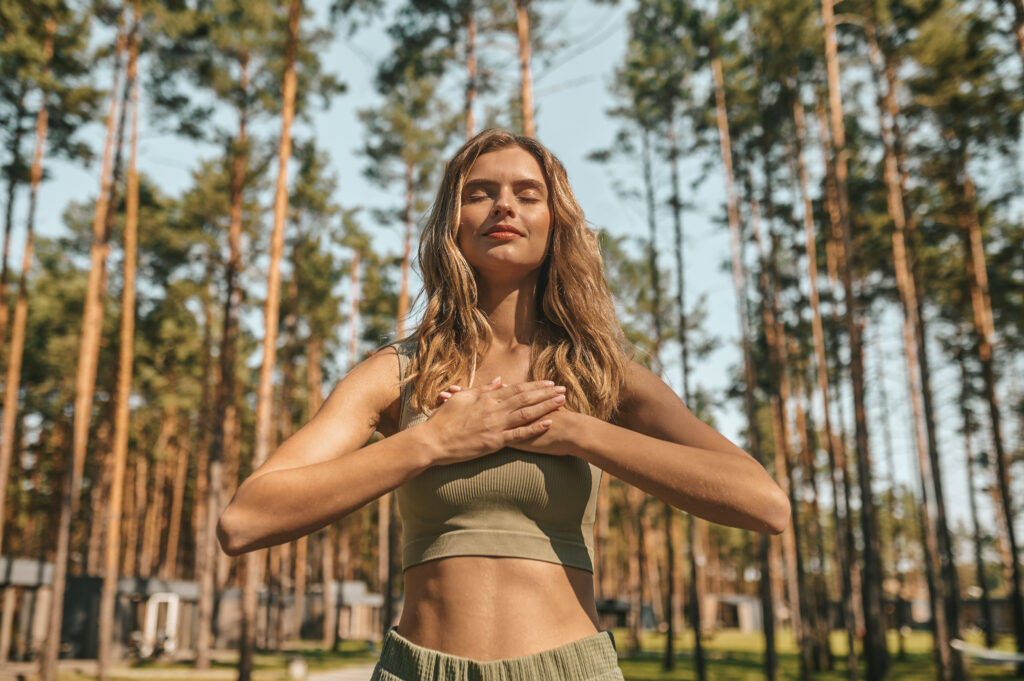
Image by Freepik
In today’s bustling world, the ancient wisdom of Ayurveda offers a serene escape. This time-honored Indian practice, deeply rooted in natural healing, has seamlessly integrated into our contemporary spa routines. But how can you harness its benefits from the comfort of your home? Let’s explore the world of Ayurvedic spa treatments and discover how they can elevate your DIY spa day into a holistic wellness journey.
The Roots of Ayurveda: A Brief Overview Ayurveda, a 5,000-year-old system from India, emphasizes balance in the body’s doshas (Vata, Pitta, and Kapha). It believes that harmony between the mind, body, and environment is the key to holistic health. This philosophy extends to Ayurvedic spa treatments, which aim to rejuvenate both physically and mentally.
Ayurvedic Techniques for Inner and Outer Beauty
- Abhyanga (Ayurvedic Oil Massage): This self-massage technique uses warm herbal oils tailored to your dosha. It not only nourishes the skin but also calms the nervous system, promoting relaxation. The rhythmic strokes increase circulation, aiding detoxification, and promoting youthful skin.
- Shirodhara: Though slightly challenging to do at home, its benefits are manifold. Warm oil is gently poured over the forehead, specifically the third eye. This treatment is deeply relaxing, can improve mental clarity, and is known to alleviate insomnia.
- Ayurvedic Face Masks (Ubtans): Natural ingredients like turmeric, chickpea flour, and rosewater are mixed to create masks. These ubtans detoxify, nourish, and illuminate the skin, combating acne and signs of aging.
- Steam Therapy (Swedana): Using steam infused with Ayurvedic herbs can open up the pores, aiding in detoxification and making the skin more receptive to other treatments.
- Ayurvedic Foot Massage (Padabhyanga): Massaging the feet with warm oils can not only soften cracked heels but also induce deep sleep and reduce fatigue.
- Dosha-Specific Bath Salts: Craft your own bath salts using sea salt and essential oils that align with your dosha. For instance, calming lavender for Vata, cooling rose for Pitta, and invigorating eucalyptus for Kapha.
- Herbal Hair Rinses: Boost hair health with herbal rinses. Amla and fenugreek can strengthen, while rosemary and hibiscus can enhance shine.
- Ayurvedic Teas for Internal Wellness: Sip on dosha-specific teas. Try tulsi for reducing stress, fennel for digestion, or licorice for throat soothing.
- Marma Point Massage: Marma points are energy centers in the body. Gently massaging them can release blocked energy, promoting relaxation. Focus on easy-to-reach points like the temples or wrists.
- Ayurvedic Eye Soothers: Place cool cucumber slices infused with rose water on your eyes. This not only reduces puffiness but also provides a calming effect.
- Natural Lip Scrubs: Mix honey, brown sugar, and a dash of lemon juice for a nourishing lip scrub. It exfoliates and hydrates, leaving lips soft.
- Ayurvedic Foot Soaks: A warm foot soak with Epsom salts, rose petals, and a few drops of lavender oil can be both relaxing and detoxifying.
FAQs:
- How often should I practice Ayurvedic spa treatments at home? While individual needs vary, a weekly session can help maintain balance and promote overall well-being.
- Can I use any oil for Abhyanga? It’s best to use dosha-specific oils for maximum benefits. Commonly used oils include sesame, coconut, and almond.
- What’s the best time for a DIY Ayurvedic spa day? Traditionally, Ayurveda recommends the morning for such treatments. However, anytime you feel relaxed and undisturbed works.
- Are there any side effects to Ayurvedic treatments? While Ayurvedic treatments are generally safe, it’s essential to understand your body type and any allergies you might have. Always do a patch test with new ingredients.
FAQs:
- How do I determine my dosha? Your dosha can be determined through a consultation with an Ayurvedic practitioner or through online quizzes. It’s based on physical, emotional, and behavioral characteristics.
- Are Ayurvedic treatments suitable for all skin types? Yes, but always do a patch test with new ingredients. Ayurveda offers solutions tailored to individual needs, ensuring suitability for various skin types.
- How often should I indulge in an Ayurvedic spa day at home? While there’s no strict rule, a bi-weekly or monthly routine can help maintain balance and promote overall well-being.
- Can I combine Western skincare products with Ayurvedic treatments? Absolutely! Just ensure you’re not mixing too many active ingredients at once and give your skin time to adjust.
Conclusion: Ayurveda – The Path to Holistic Relaxation Ayurveda offers a holistic approach to self-care, blending ancient wisdom with practical modern techniques. By integrating these treatments into your DIY spa day, you’re not just pampering yourself; you’re embarking on a journey of holistic wellness.


